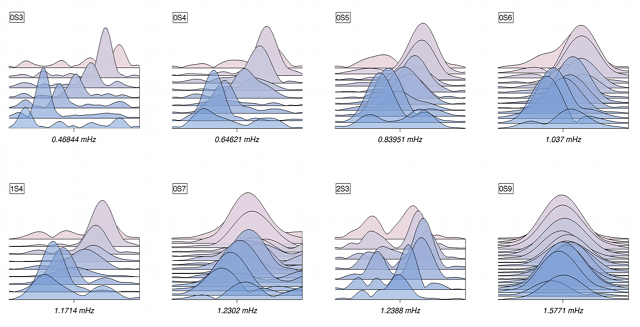Investigation of Earthquake Source Properties with Normal Mode Data
Point of contact: Petros Bogiatzis
Large earthquakes make Earth oscillate like a ringing bell for weeks, even months after the event. These oscillations are called normal modes or free-oscillations and they provide important insight about the properties of the causing earthquake, and the structure of our planet. Normal modes are stationary waves that are created from the constructive interference of body and surface waves circling the earth multiple times. Free oscillations of the Earth have very large periods and they can be recorded with long period seismometers. In order to process normal mode data lengthy, uninterrupted recordings from many stations around the globe are needed.
 |
 |
For very large earthquakes free oscillations become very important in constraining seismic source properties, especially the seismic moment. This is because as earthquakes become larger, the corner frequency of the source displacement spectrum shifts to lower frequencies (where normal modes exist), and determination of seismic moment using high-frequency data such as body and surface waves become problematic.
The March 11, 2011, Mw 9.0, Tohoku-oki earthquakeWe use normal mode data to investigate the properties of the source of the Mw 9.0 Tohoku-oki earthquake that occurred on March 11, 2011. This earthquake excited free oscillations that were recorded globally by numerous high-quality instruments and remained observable for several weeks (for some modes) after the main event (fig. 2).
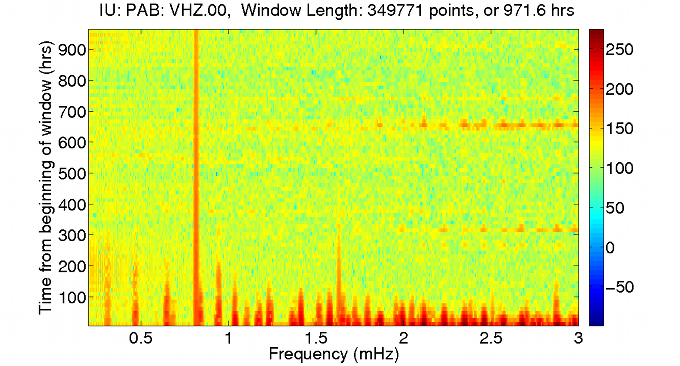 |
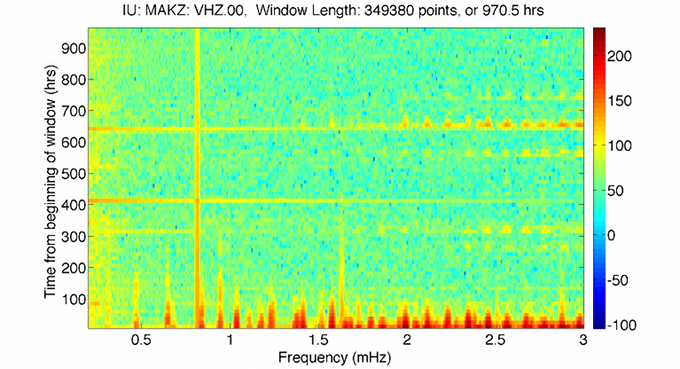 |
Seismic records from very long period seismometers, with about 40day length after the main shock are analyzed. The waveforms are preprocessed in the time domain to remove problems such as spikes and offsets. The instrument response is also deconvolved from each seismogram. Records with low SNR are discarded. For each mode of interest, we remove the location dependence by collapsing the spectra of different stations to a compact set of “receiver strips” (fig. 3). These receiver strips contain information about the source parameters, but also include effects due to Earth's rotation, ellipticity and internal structure. Since rotation and ellipticity of the earth are accurately known, we can readily make corrections of their impact to the data. Correcting for the internal structure is more challenging, and we use splitting functions from previous studies to remove the effects due to it.
After correcting receiver strips for rotation, ellipticity and structure we inverted for the centroid moment tensor of the source. This can be done either for each mode separately or for all modes under a joint inversion scheme.
The fact that this event was quite shalow (~20 km) results increased uncairtainty in estimating the the vertical dip-slip elements of its moment tensor. Mrθ and Mrφ are hardly contributing to the low frequency normal modes spectrum thus they can’t be fully constrained. To overcome this we used the Global CMT estimates for these components as an a-priori constrain to the inversion. Our result is shown in fig. 4. The scalar moment of the earthquake is estimated 535.1 x1e27 dyn∙cm, corresponding to magnitude Mw 9.1. There is a good agreenment of our results with solutions based on different seismic data of higher frequency content confirming the temporal and spatial compactness of this earthquake. We found no evidence for a slow component, and the data can be fitted satifactory with the proposed solutions.
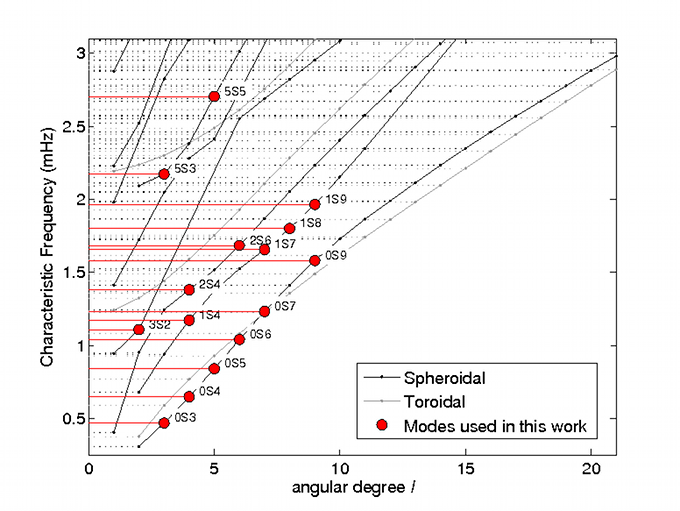
|
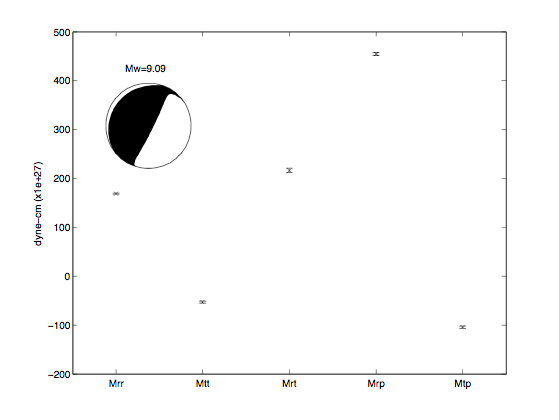
|
|
|
|
You can find more information here:
Acknowledgment
In this work we have used data from Global Seismograph Network and specifically the IRIS/IDA: Scripps Institution of Oceanography (SIO) and IRIS/USGS: Albuquerque Seismological Laboratory (ASL)/USG. The data were provided by IRS Data Management Center. We also gratefully acknowledge NSF support.
